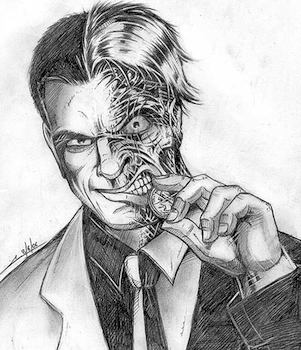Fandom In/As the Academy
Paul Booth / DePaul University

Given the enduring popularity of fan studies as both a topic and a methodology in cultural studies over the past two decades, it is no surprise that the time has come for a critical reassessment of the value of fandom within the academy. Fandom as a practice has always existed in an uneasy relationship with its own academic study. In my own experience as both a fan and as an academic, I find myself increasingly drawn towards either end of the aca-fan dialectic. However, this continual pull—and this special call for papers—has me thinking of ways in which fandom and the academy can and do complement and balance each other. In this piece, I’d like to look at the specific pedagogical value of fandom as an activity. If we are to examine the state of fandom in the 21st century, then we owe it to ourselves to see value in all fannish work; especially that which takes place in the classroom. Fannish activity goes beyond pop culture, and beyond academia (see, for example, the art of Marcel Duchamp, which uses remix, appropriation, poaching, and other so-called “fannish” activities, Figure 1). At its center, fandom is a universal practice invoking appropriation, so it only makes sense to examine the way it, itself, can be appropriated in a variety of educational contexts.
Crucially, the value of fan studies is related to larger issues in the academy. The choice we have of what to study is inherently an ideological one. Some disciplines are culturally valued higher than others, and the choice of what we teach and study is limited by those that have value in our culture. Take, for example, pornography. McNair (2009) argues that the study of porn has always been looked down upon in the academy: he calls it the “‘pariah’” of media studies (p. 558). Few study pornography and even fewer teach it. This dearth of scholarship is not because it is unpopular, nor because it is unprofitable (far from it: according to Online MBA (2010), over 28,000 Internet users view pornography every second and over $3,000 are spent every second on pornography). Rather, pornography represents a subject deemed not serious enough for academic study. Yet, obviously, it is one of the most prevalent media forms out there.
If the choice of what to study is an ideological one, then people study what has been ideologically groomed to be important. We believe that the study of fans represents a chance to look at the way everyday people interact with popular media. Two things immediately spring to mind. First, fan studies as a discipline has done a remarkable job of showing how everybody is a fan of something, be it Christianity, The Lord of the Rings, or Big Macs (or, in the case of Figure 2, all three!).

But secondly, by looking at fans, we as academics inherently validate fandom as an area of study. What, then, is it precisely that we validate? What is most important to us? Arguably, the key characteristics in fandom that have proven most salient are those that define characteristics of fan communities in general: Participation; Civics; Democracy; the ability to make our own meanings. Putting fandom to use in our classrooms not only valorizes the fan, but also valorizes the practices of fandom: ideals of democracy that resonate across traditional Western culture (Figure 3).

Indeed, such an ideological validation rests on the divide between what is cultured and what is popular, and is the focus of Matt Hills’ analysis of the intersection of fan studies and the academy. For Hills (2002), this type of “moral dualism” reflects a patterned and endemic fallacy in academic studies of fans: that “specific academic agendas have tended to dictate the conceptual shape of fandom within cultural studies” (p. 8). The exemplar precedes the analysis. In other words, by choosing to focus on fans, fan academics automatically inscribe fandom as a culturally significant group. Because we choose to focus on fandom in our classes and in our scholarship we are faced with Hills’s moral dualism: we look for the positives and ignore the negatives of fandom or fan studies. Is there a way to negotiate our way out of this post-structuralist quagmire?
There is a way to use the inherent instability of fan studies itself in the classroom as a pedagogical tool. Fans are particularly resonate and reliable cultural scholars; as Jenkins (1992) argues in his chapter about “fan critics.” Further, as Ross (2008) points out, fans have always been aware of, and participants in, academic discourses about popular media texts (p. 38). To teach fandom, therefore, I find it particularly relevant to appropriate fan methodologies and fan tactics for classroom use and pedagogical engagement.
What do I mean by appropriating fan tactics for the classroom? Fan tactics include remixing, mashups, appropriation, and playfulness. These characteristics appear in assignments, projects, finals, and activities in my classroom. Students in my classes remix videos, mashup projects, use appropriation to learn citations, and play with media. I have taught both graduate students and undergraduate students using these fan tactics and within fan studies. For fans, such a methodology is precisely the same as their own appropriation of materials for fanfic, vids, filk, or other types of fan-created content. Fans know their texts inside-out. First, one must understand the basic mechanisms of the extant text; next, one must take into consideration his/her own personal viewpoint in/on the text. Yet, as Jenkins (2010) recently wrote on his blog, teaching fan classes can be a double edged sword: one wants to discuss the methods of fans but also learn to critique those very methods.
For the professor of fan studies, therefore, the participatory nature of the fan studies discipline must translate and transition into extraordinary pedagogical tools. As Jenkins et. al (2009) reminds us, “a growing body of scholarship suggests potential benefits from these forms of participatory culture, including opportunities for peer-to-peer learning, a changed attitude toward intellectual property…and a more empowered conception of citizenship” (p. xii). I have found that using fandom as a topic and as a type of activity in my classroom has provided solid learning outcomes, including more insightful and thoughtful discussions of ethical issues in studying fans, and has augmented already well-constructed arguments for examining the ethics of new media in general.
To be a fan is no different from being an academic. As an academic, I examine popular media with critical theory in order to understand basic tenets of our culture and to reveal the human condition. As a fan, I watch popular media with a critical eye in order to understand (a qualified and subjective) “best” of our culture and to revel in what it means to be human. Fandom and academia are two sides of the same proverbial coin (Figure 4).

Saliently, and in conclusion, it is perhaps only slightly disingenuous for me to note that I appropriate fan tactics for my classroom engagement. Rather, it might be better phrased to state that I appropriate academic discourse in my discussion of fan texts. Put in a less dualistic sense, my fandom informs my teaching and my teaching informs my fandom. I cannot artificially consider fandom and the academy as separate entities, for to do so is to do a disservice to both. To be a fan, to be an academic—we all make choices every day in terms of what we value and what we share with others. As a culture we inherently validate one endeavor over the other. But the two are ultimately inseparable. Yes, I teach fandom and yes, I teach fan studies: Indeed, I can do nothing but.
Image Credits:
1. Wikimedia Foundation.
2. Post by Kurama, Christian Anime Forum (originally worth1000.com)
3. Wikimedia Foundation. Image by Kallistos.
4. Newsarama Forums. Image by Redpen.
Works Cited:
- Hills, M. (2002). Fan cultures. New York: Routledge.
- Jenkins, H., with Purushotma, R., Weigel, M., Clinton, K., and Robinson A. J. (2009). Confronting the challenges of participatory culture: media education for the 21st century. Cambridge, MA: The MIT Press.
- Jenkins, H. (1992). Textual poachers: Television fans and participatory culture. New York: Routledge.
- Jenkins, H. (2010, 09 Jan). Fandom, participatory culture, and web 2.0 — a syllabus. Retrieved from http://henryjenkins.org/2010/01/fandom_participatory_culture_a.html, on 09 Jan 2010.
- McNair, B. (2009). Teaching porn. Sexualities, 12(5), 558-567.
- Online MBA. (2010). The stats on online pornography. OnlineMBA.com. Retrieved from http://www.onlinemba.com/blog/stats-on-internet-pornography/ on 01 June 2010
- Ross, S. M. (2008). Beyond the box: Television and the internet. Malden, MA: Blackwell Publishing.
Please feel free to comment.
I agree fully with the academic study of fandom and fan studies. Even to the extent of the material (the shows, comics, and movies) for the various fandoms; how these things all delve into serious social issues much of the time. They make real issues such as racism, cultural shock, suicide, genocide, euthanasia (the list goes on), apparent to an extremely vast body of individuals who take an interest in their respective fandom and who acquire knowledge of these issues. Much of the time (I speak from experience), the involvement of social or psychological issues in a particular story line aid understanding of the issues and provide an example for connecting ideas and theory. I feel the study of fandom and fan culture is invaluable.